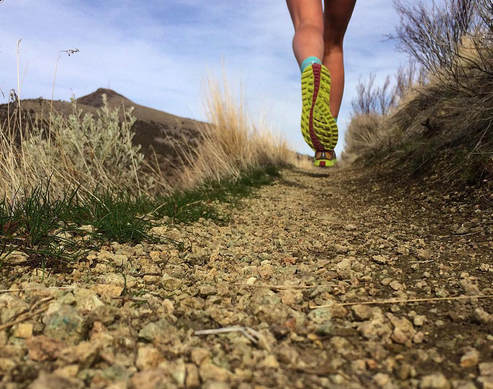|
When you think of trail runners I bet the words "fit" "strong" "athlete" and too hard" come to mind. Trail running has some seriously good benefits for your core, legs, heart and mind. The problem is people think trail running is only for people who are already strong and athletic- I'm here to tell you that you're wrong. You can be a trail runner just by getting out there and putting one foot in front of the other. Read on about the benefits and my guide to first getting out there. Maybe we'll see you at Blue Hills sometime this Spring/Summer! TRAIL RUNNING BENEFITS
JEn's guide to getting startedWhen I first started running to train for OCR's I would mostly do street or treadmill running. Every now and then I'd venture out into Wompatuck for a trail run. It wasn't until we got Parker that I started running more trails. He didn't like the loud cars or stopping at every crosswalk and honestly- I didn't either. So, one day I packed a bag and headed out for a long day of hiking and trail running with him and now 99% of my running is on trails. So how do you begin?
1. Find the right shoe. Everyone is different, feet are different, how you strike is different, the cushion preference is different. For shorter runs I use a Merrell Trail Glove and for longer runs I use Alras. But- my feet are not your feet. Research shoes and I'd suggest going to an REI to try them on and get professional advice. 2. Find a trail. There are so many trails in New England. My favorite around here is Blue Hills. Do some research before if you'd like- I like to use Alltrails.com. On this website (or app) you can search for nearby trails and find out where to park for the beginning, rating of other users, the length, trail difficulty and other general tips. If you're heading out for your first trail run I would suggest an easy-moderate loop. As for mileage, trail running is harder than street or treadmill and works your cardiovascular system and legs much more. You can easily add on 3-5 minutes per mile so taking that into consideration I would suggest finding a loop that is 50-75% of the mileage that you normally run. Example: If you typically run 3 miles when you head out, try a trail run that's 1.5-2.25 miles long. If that's easy- hey, now you know you can do more! Basically- don't be silly and do something you're not sure if you can. You don't want to run out of energy out there. Make sure you track your time and mileage. 3. Add strengthening exercises. Trail running works your ankles- a lot. Add exercises into your routine that includes ankle mobility and single leg strength. Some great exercises I use in my recovery are bosu ball stands, lunges, TRX pistol squats, single leg deadlift, and ankle stretches. 4. Keep getting better. If you felt comfortable on your last run, maybe increase your mileage a bit (not too much!). Or- if the easy trails are too easy, aim for a more challenging trail like adding technical (really rocky) parts in, or adding something with elevation. 5. Track your progress. Remember that first trail run you recorded? After a month or a few runs, head back to that initial trail and try again. With a few trail runs and strengthening exercises under your belt you should beat your time even by 10 seconds. Be proud of that 10 seconds! 6. Now.... you are a trail runner. Time to get some hydration packs, gators, wind breakers, GPS watches and sign up for a trail run! Comment below if you have more advice, the more knowledge we all have, the stronger we all become. Jen Comments are closed.
|
Categories
All
Author
|


 RSS Feed
RSS Feed